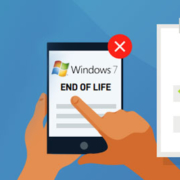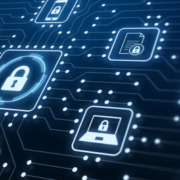Protect mission-critical data from ransomware and malware
A ransomware attack is an online crime where the perpetrator demands payment to release the hold on encrypted or stolen corporate data. The attacker may even threaten to delete or auction data to the highest bidder on the dark market unless you paid the ransom. This type of attack is one of the strongest business models for cybercriminals. Financial damages from such attacks expect to reach $20 billion in this year alone.
The State of Ransomware 2021 report states that a third of the 5,400 organizations surveyed got hit by a ransomware attack in 2020. Although most of those attacked got their data back after paying the ransom, the price was too high. The average ransom paid per incident was about $170,000, but the total cost of rectifying an attack came close to $2 million.
Such figures show just how prevalent and devastating ransomware attacks have become. Don’t let your business fall into these statistics; ransom-proof your data estate in the following ways:
First, understand the attack’s lifecycle
Not all ransomware is created equal. Attacks range from simple database encryptions to sophisticated multi-phased exploits. However, a typical attack sequence begins with a malware injection carrying irreversible encryption ciphers. Email is the most common vector for this type of attack; 54 percent of ransomware infections are through email delivery. Other popular gateways for ransomware attacks include open RDP connections, software vulnerabilities, malicious websites, and poor user practices.
In most cases, the malware encrypts important files. The perpetrator demands payment in the form of cryptocurrency in exchange for a decryption key. Unfortunately, many of these ciphers cannot be reverse-engineered. Ideally, the attacker lifts the siege once a full ransom is paid, but it doesn’t always pan out that way.
Educate your employees
End-user devices and employees form the first line of defense against ransomware attacks. Most exploits start with a social engineering scam, mostly email-based phishing. Employees can unwittingly open malicious email attachments or links, share login credentials, or leave a backdoor open for threat actors. Additionally, employees can also make careless mistakes or neglect security protocols, seriously jeopardizing cybersecurity. For these reasons, the human factor remains the most vulnerable link in any digital security strategy.
Train your employees on the importance of observing cybersecurity best practices and, more importantly, identifying and handling phishing and ransomware attempts. Also, enforce strict data protection policies to instill security accountability among staff members.
Perform regular data backups
Regularly backing up data is the easiest and surest way to protect your organization from ransomware attacks. Keep at least three copies of data, with one copy offline or offsite. A recoverable data backup gives you leverage during an active attack. If an attacker successfully encrypts your data, you can delete it and restore a mirror copy.
The lack of a secondary data repository is the main reason ransomware victims bend to their attacker’s demands. But paying the ransom doesn’t guarantee you’ll get your data back or that copies of it won’t be sold anyway – there’s no honor among thieves.
Strengthen your overall security posture
Deploy advanced cybersecurity tools and services to identify and stop imminent threats. Equip your data systems with monitors for suspicious activities, like network scanners, unusual system behavior, or security-disabling malware. These all might indicate early signs of an ongoing or dry-run attack. Remember, ransomware attacks can be mind-bogglingly sophisticated. Still, pointers such as malware detection alerts and unusual network traffic are common red flags for these exploits.
All cyberattacks, including ransomware, exploit the same security weaknesses – poor safety policies, vulnerable software applications, unsecured cloud services, gullible employees, etc. So, look at the bigger picture and take a holistic approach to cybersecurity to protect all your digital assets from every conceivable threat.
But you might not be able to do all that on your own. Get a professional data security partner to help your business set up a comprehensive cybersecurity strategy. You can count on GDR Group to provide world-class digital security support uniquely designed for your organization. Contact us or call 844-437-4768 to get started.










